Regaining my senses after the initial wave of architectural euphoria, I returned to the entrance to purchase the personal audio guide. It’s also possible to join a live tour, but I wanted to explore on my own for a bit. Over 40 different locations are discussed in detail on the audio guide. I dutifully returned to station number one and began the history lesson.
After the general layout of the site was described, I immediately saw the similarity to the Mall in Washington D.C. The placement of the Presidential memorials, Smithsonian Institutes and war memorials around a central public space is highly reminiscent of the Roman Forum, just to a super-sized American scale. The parts of the Roman Forum that are remain uncovered today relate closely to the functions of the representative State government and religious worship.
One of the oldest colonnades belongs to the ruined Temple of Jupiter, king of the Roman gods. The large plain Ionic columns stand despite the torments of time. In fact, this temple and many others of the Forum were destroyed numerous times in antiquity. The elements that survived were highly regarded by many ancient cultures or re-purposed. Archeologists also note that the current excavated level of the Sacred Way is several feet below its constructed level in Christian Rome. For that reason, the entrance to some remaining monuments seems strangely elevated above the modern path.
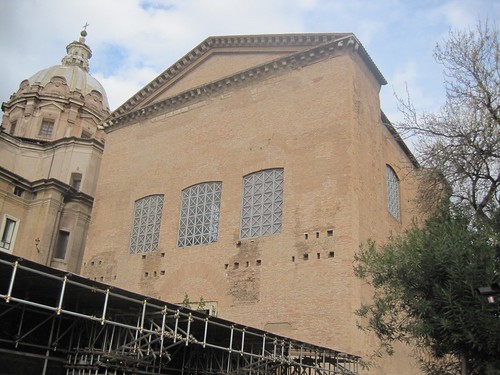 The Curia, or Roman Senate, has survived because it was converted into a chapel by the church. The preserved mosaic marble floor is one of the most impressive aspects of the ancient building. Compared the Cesar’s palaces and public works, the building fairly modest. Could that unusual display of modesty by the Roman leaders have been in light of cost conscientious public? Like the US House of Representatives, it’s difficult to imagine the 100+ senators congregating in the under-sized space.
The Curia, or Roman Senate, has survived because it was converted into a chapel by the church. The preserved mosaic marble floor is one of the most impressive aspects of the ancient building. Compared the Cesar’s palaces and public works, the building fairly modest. Could that unusual display of modesty by the Roman leaders have been in light of cost conscientious public? Like the US House of Representatives, it’s difficult to imagine the 100+ senators congregating in the under-sized space.All other monuments seem to be outrageous in scale. Of these, the Basillica of Maxentius is the most impressive. Three huge arched ceilings survive. As massive as the structure still appears today, we can only view a third of the space. It was so large that records show that multiple functions were often held concurrently, separated by large curtains that hung from ceiling. Despite the name, this structure was not originally used for religious ceremony. Several other temples on the site served the functions of god worship - including the posthumous establishment of cults to a former Cesar.
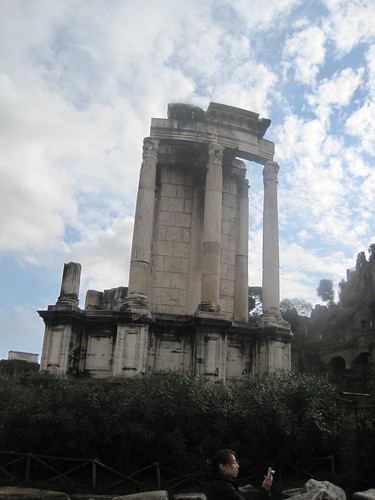 The most interesting stories are associated with the temple of Vesta. This goddess was particularly important, because the preservation of her eternal flame, allegedly spirited away from Troy when it was sacked, guaranteed protection to city of Rome. A cult of priestesses, known as the Vestal Virgins, maintained the flame and, in return, were granted unprecedented privileges. They attended social events as special guests, travel by carriage around the city and could commute the sentences of death row inmates. After 30 years of service, the women chosen for their unparalleled beauty were finally able to marry. If on the other hand, they were found to have violated the terms of their pure existence, they were immediately put to death.
The most interesting stories are associated with the temple of Vesta. This goddess was particularly important, because the preservation of her eternal flame, allegedly spirited away from Troy when it was sacked, guaranteed protection to city of Rome. A cult of priestesses, known as the Vestal Virgins, maintained the flame and, in return, were granted unprecedented privileges. They attended social events as special guests, travel by carriage around the city and could commute the sentences of death row inmates. After 30 years of service, the women chosen for their unparalleled beauty were finally able to marry. If on the other hand, they were found to have violated the terms of their pure existence, they were immediately put to death.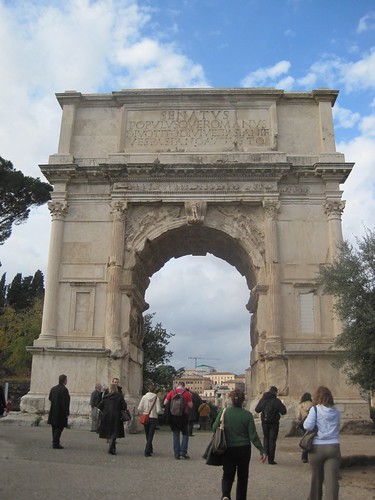 Finally, the war memorials are among the best preserved monuments on the site. These Arches of Triumph commemorate several decisive victories in the history of the Empire. The arches of Septimus Severus, Titus and Constantine form the axis of the Sacred Way. Titus’ arch depicts the victory of Rome in Jerusalem and the return of the Holy Land to the Empire. Constantine’s arch shows his victory over a rival and the adoption of Christianity as the state religion. He shrewdly uses popular symbolism to credit his supporters and speak to the people of Rome.
Finally, the war memorials are among the best preserved monuments on the site. These Arches of Triumph commemorate several decisive victories in the history of the Empire. The arches of Septimus Severus, Titus and Constantine form the axis of the Sacred Way. Titus’ arch depicts the victory of Rome in Jerusalem and the return of the Holy Land to the Empire. Constantine’s arch shows his victory over a rival and the adoption of Christianity as the state religion. He shrewdly uses popular symbolism to credit his supporters and speak to the people of Rome.In these ruins, the history of Rome is well recorded. For better or worse our impressions of the Roman people and their empire are largely drawn from the remains of monolithic places such as these. It makes one wonder, how will future societies judge America based on war monuments and memorials featured in our nation’s mall?
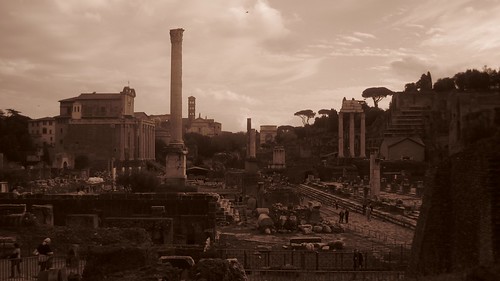

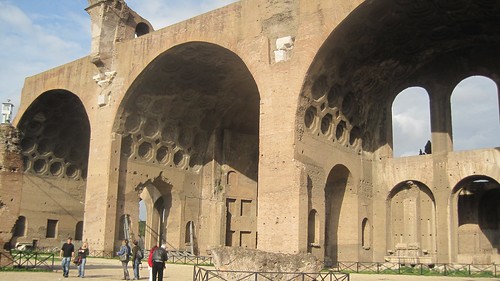
![Reblog this post [with Zemanta]](http://img.zemanta.com/reblog_e.png?x-id=4ebe33c4-f764-441e-9f7c-7a3d9ebb2981)

No comments:
Post a Comment